Mass Studies brings together North and South Korea with Venice biennale pavilion
Venice Architecture Biennale 2014: Mass Studies founder Minsuk Cho curates an "epic-scale show about both Koreas" with one of the most politically ambitious projects at this year's Venice Architecture Biennale (+ interview + slideshow).
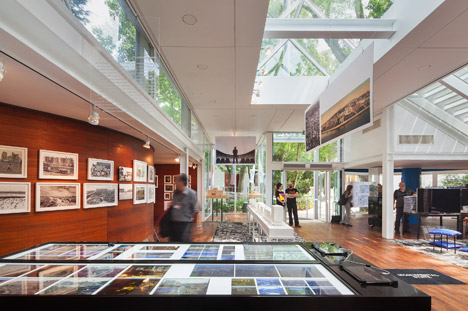
The South Korean pavilion hosts an exhibition involving almost 40 projects, which together aim to demonstrate the potential of a unified Korea by bringing together and interrogating the architecture of both cultures.
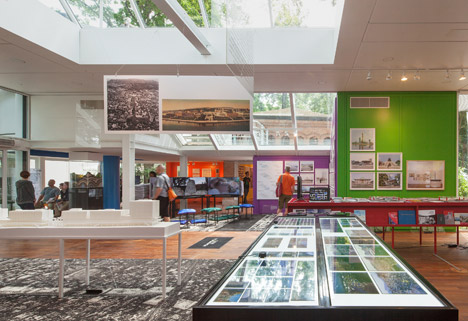
"The trick is to actually look back to work to move forward," explained Cho about his response to the brief from Rem Koolhaas, this year's biennale curator, who invited the international participants to create an exhibition around the theme Absorbing Modernity.
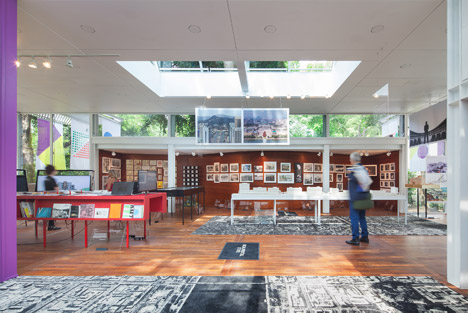
"Something we thought it important is to look a both parts of Korea because 100 years ago it wasn't the same, right? Because it was actually one entity, it was the beginning of Japanese colonisation," said Cho, who acted as both commissioner and co-curator of the pavilion alongside architectural historians and critics Hyungmin Pai and Changmo Ahn.
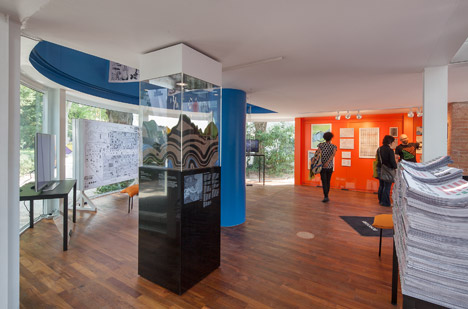
Cho had originally intended to involve North Koreans in the project, but this was fraught with complications.
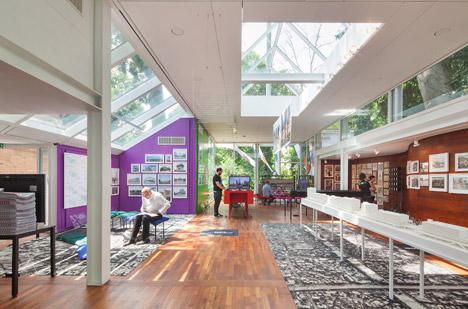
"Until December actually, I was quite set on doing the work to engage them by sending love letters through various routes, because I cannot directly contact them," said Cho. "Then somehow that process organically grew into some quite intense global outreaching research project, because we had to find the right contacts and so on."
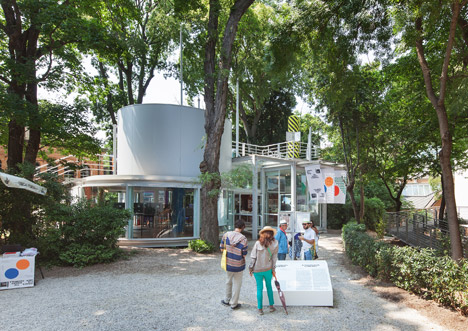
"It became quite an epic-scale show about both Koreas, about architecture in both Koreas – but not by both Koreas. I think we have 39 entries in this quite intricately urban scenario and, somehow a lot of things came out of the collaboration."
"There are no North Koreans. But they're the mediators, they're the windows that allow us to experience."
Titled Crow's Eye View: The Korean Peninsula, the exhibition features projects from international contributors focused around four main areas of research.
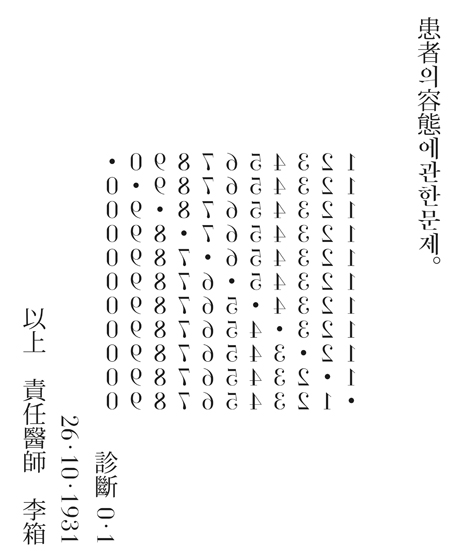
"Each one is like a bird, they have their own Crow's Eye View," said Cho. "Usually it will be a Korean gathering in a foreign pavilion, but this has become something else. It's not only about architecture: among 39 of them, only 19 are architecture, urbanists, architecture theorists and people from our display. The rest is all through different disciplines such as art and filmmaking."
The first area, called Reconstructing Life, is largely photography-based and looks at the different ways architecture has been used to create national identity after the Korean War in both Pyongyang and Seoul.
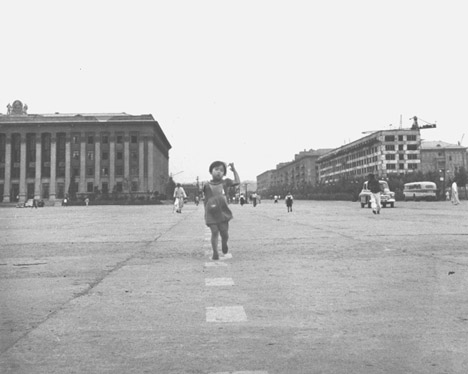
Monumental State examines the architecture of the state. While the North Korean architect is given the task of building a socialist society, architects are not celebrated as authors of their work which is instead credited to the state's leader, explained the curators. While in South Korea, the idea of individual creativity is celebrated but architects working on public projects are in thrall to bureaucracy and capitalism.
The third area centres on the North/South border – the "most radically mediated, the most militarised and the most politically charged boundary in the world". Among the exhibits is a topographical depiction of a mountain that was a key battle site during the Korean War, showing the tunnels built underneath ground level used by the North Korean army.
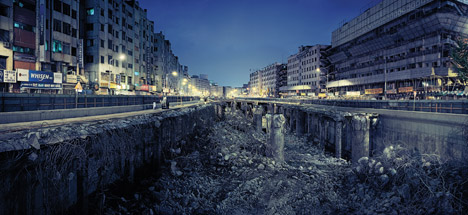
The final area, called Utopian Tours, is comprised of a selection of images from the collection of Nick Bonner, the co-founder of Beijing-based company Koryo Group, which is dedicated to travel, film and cultural production in North Korea. This includes the comic strip A Day of an Architect and a series of images depicting environments for tourism called Commissions for Utopia, both of which have been produced specifically for the pavilion and created by anonymous North Korean artists and architects.
The roof features a series of poems written in the 1930s by Yi Sang, "a young architect dropout who was only 24 years old – a beatnick Dadaist-influenced Korean poet who died three years later, so he never experienced division," said Cho. The exhibition takes its name from one of these poems.
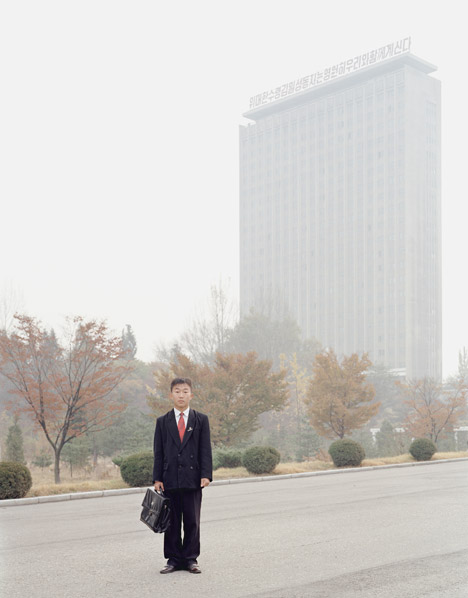
photo by Charlie Crane, 2006
The South Korean pavilion is one of the most recent structures on the Venice Biennale's Giardini site. Its architect, Seok Chul Kim, originally proposed using the structure to also host North Koreans, although this has yet to happen. If it worked as intended, Cho said the pavilion could "generate a new reality".
"This is what I think this creative discipline culture here can do, allow us to look into it and come up with ways to engage in ways that politicians cannot come up with," said Cho.
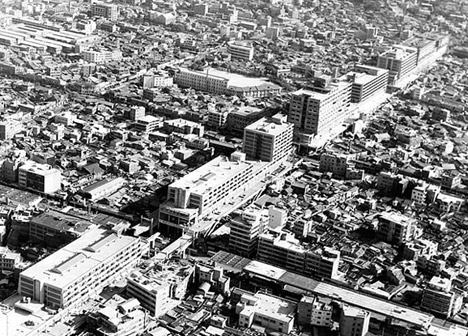
photographer unknown
Here's an edited transcript from our interview with Minsuk Cho:
Minsuk Cho: I'm an architect mainly but I took the role of being a commissioner, which kind of evolved into the role of being a curator with two other curators for this exhibition.
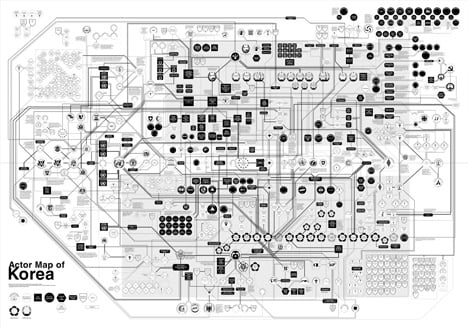
Anna Winston: How was the the experience of putting together the pavilion?
Minsuk Cho: When I started out last April I never thought I would end up at this point, but we clearly understood the environment as [wanting us] to look back. The trick is to actually look back to work to move forward. And this was a fascinating task within the timeframe – a very monumental one. Something we thought is important to look a both parts of Korea because 100 years ago it wasn't the same, right? Because it was actually one entity, it was beginning of the Japanese colonisation. So the idea was initially to engage North Koreans.
Until December actually, I was quite set on doing the work to engage them by sending love letters through various routes, because I cannot directly contact them, as you probably know. Then somehow that process organically grew into some quite intense global outreaching research project in a way, because we had to find the right contacts and so on.
Then it became quite an epic-scale show about both Koreas, about architecture in both Koreas – but not by both Koreas. I think we have 39 entries in this quite intricately urban scenario and, somehow a lot of things came out of the collaboration, there are only 18 of them who are South Koreans. Twenty-one of them are non-South Koreans but there are no North Koreans. But they're the mediators, they're the windows that allow us to experience. Each one is like a bird, they have their own Crow's Eye View.
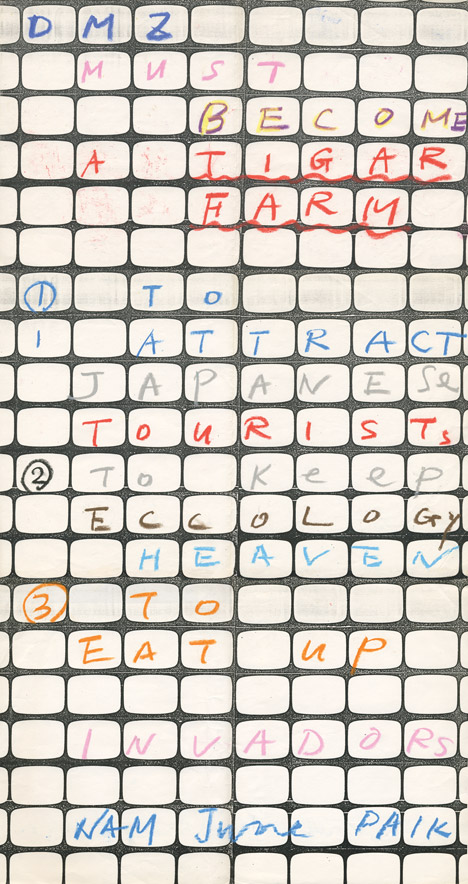
Anna Winston: Where does the exhibition get its title from?
Minsuk Cho: It's the title of the serial of poems that was written in 1934 by a young architect dropout who was only 24 years old – a beatnik Dadaist-influenced Korean poet who died three years later, so he never experienced division.
But this was a series of seemingly disjointed poems and you're going to see on the roof some of the examples. It's become a metaphor and also at the same time it's become kind of a framework of this epic-scale narrative created by this hush-hush defragments in a way. So for us, each piece is fascinating, but also it tells a lot more stories what is in-between those things. There are some funny punchlines, there are certain things that cannot be said, certain things that are abysmal mysteries in there and emptiness as well. Hopefully this will at least suggest some king of excitement, demonstrating some sort of serious potential of how great it could be when the two meet one day. At this point I think this is a great opportunity to make today's opening like a festive event, that's why we have 18 fake world flags that represent some world that we created. And eventually, maybe next year, maybe we can come with the two flags: North and South Korea. Who knows, it could turn into one flag.
There's a written interview with this architect who designed this last pavilion in January and the reason why we actually were able to take this position as the last country to occupy Giardini was actually this idea that he proposed – together with great artists – to Massimo Cacciari the Mayor of Venice [from 6 December 1993 – 30 April 2000] that we will host North Koreans, so that it becomes much more important then, not just in our show but in all of the architecture show. It could really generate new reality.
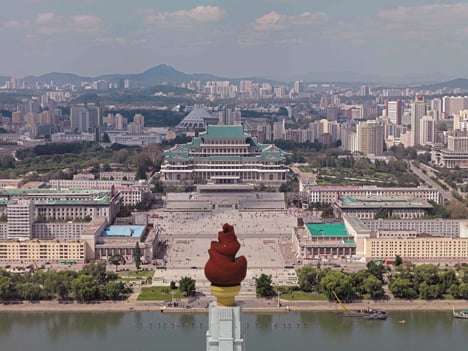
Anna Winston: It's quite an ambitious thing to do to try and unite the two countries through an exhibition.
Minsuk Cho: It didn't work out but I think we created some incredibly important camaraderie between these interesting people. Usually it will be a Korean gathering in a foreign pavilion, but this has become something else. It's not only about architecture: among 39 of them, only 19 are architecture, urbanists, architecture theorists and people from our display. The rest is all through different disciplines such as art and filmmaking.
This is what I think this creative discipline culture here can do, allow us to look into it and come up with ways to engage in ways that politicians cannot come up with.
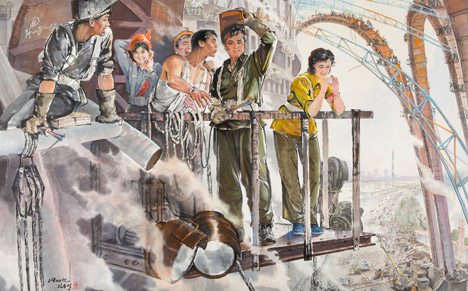
Anna Winston: Have you had a chance to see the rest of the biennale and the other pavilions?
Minsuk Cho: It's amazing, it's really charged and intense. Of course every pavilion has a wide-ranging way of addressing this issue and I think putting all these pieces of the puzzle together and seeing it in one place is really an opportunity. I wish they made this whole catalogue as a one-volume book – I collect those!
Anna Winston: Has Rem has been quite supportive of your project?
Minsuk Cho: Yes, absolutely. I'm very grateful. Also I'm grateful that it gives me the perfect platform to do something that I kind of wanted to do. My idea started out when I was designing the Shanghai Expo South Korean pavilion 2010 and there was a North Korean pavilion, because it was the first time North Korea was appearing at this festive event. I thought it would be at first curious but then something hit me: I didn't know how to react to it, but there were actually similarities there.
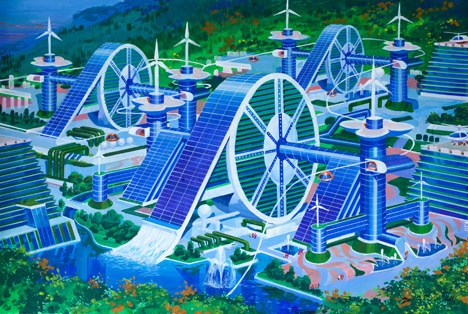
The South Korean pavilion idea was bringing Seoul as a pixelated cartoon map, a 3-D map, 1:300 scale version with a semi-covered structure. Then they had this much more humble scale building, but inside they brought Pyongyang in their own way. They did the pagodas and they had these pine trees – very representational but I thought 'wow, we thought of the same thing'. Some of the moment here captures that in a way, but we should be able to articulate that better later. The Korean peninsula could be much more cohesive sometime in the near future.